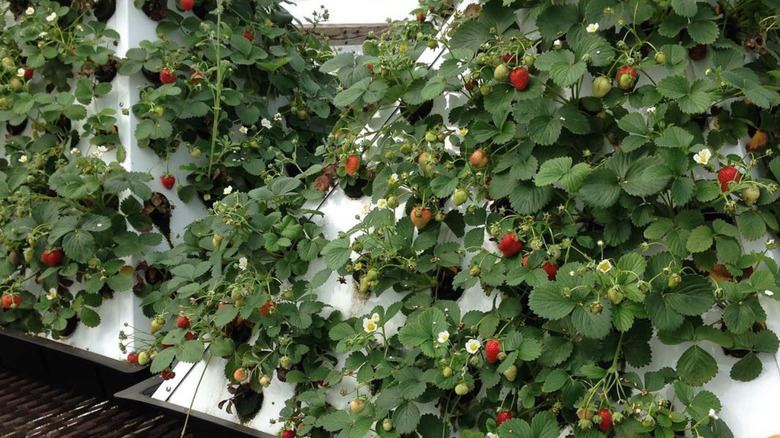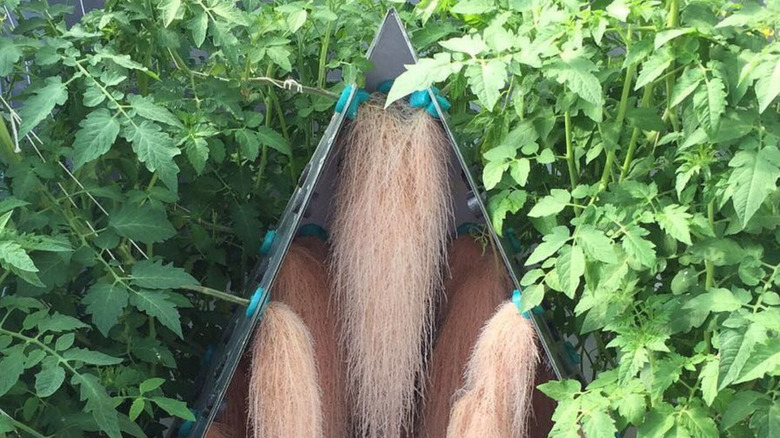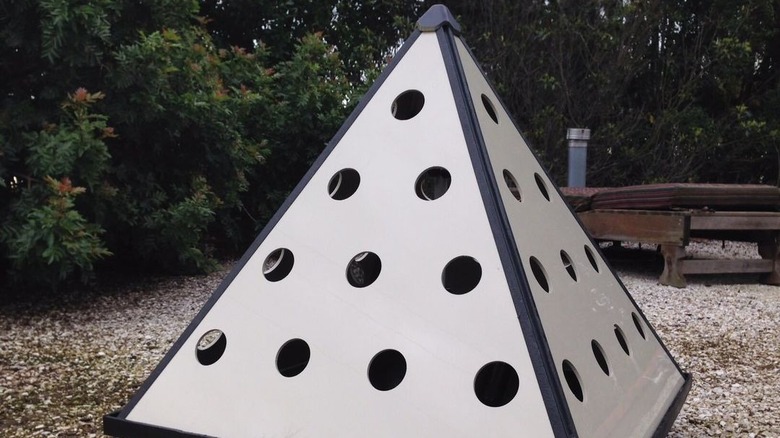What Is A Pyramid Garden And How Can It Help Your Plants Thrive?
Because vertical gardens are the perfect solution for those with small backyards, this space-efficient method for growing crops and vegetables has become wildly popular over the years. While there are several shapes and sizes available on the market, pyramid gardening may be the next buzzworthy trend. Enerama Environmental Technologies has introduced an innovative pyramid garden that offers numerous benefits for both plants and the environment. Only 4 by 4 feet, this design allows you to plant up to a whopping 136 plants at once. With 32 square feet of planting area, each plant slot is spaced 6 inches apart, so they have plenty of room to grow and expand.
This system uses aeroponics, a method in which roots are suspended inside the structure as they receive nutrients and moisture from a fine mist spray. As the roots are enveloped in water, any excess drips into a tray for filtration and recycling. Pyramid gardens may be helpful to those who are new to the world of plants. Because it uses automatic irrigation, it takes the guesswork out of watering and choosing the proper soil. Let's get into more of the benefits of pyramid gardening and how it can help your plants thrive.
Pyramid gardening is easier for beginners
Growing a healthy garden from scratch can be challenging, especially if you've never worked with plants before. For successful cultivation in standard gardens, you'll need to determine which soil type works best for each species, how much water different plants need, and other distinctive care conditions. Pyramid gardening eliminates the need for soil and pesticides, simplifying the gardening process and reducing environmental pollution. The automatic irrigation system will supply your plants with all the nutrients they need to grow and thrive. It also takes the confusion out of watering, so you won't have to worry about over- or under-hydrating the roots. This technology uses 80% less water than traditional methods, significantly reducing water waste and conserving this precious resource.
Enerama also states that the produce grows 30% faster, allowing you to cultivate up to 6 times each year. Because of the ability to nurture a large number of plants in each pyramid, you can grow your crops in batches to provide a continuous and abundant harvest of fresh produce. The design also simplifies harvesting underground crops like potatoes, carrots, and radishes. With this unique growing structure, your root vegetables grow on the inside, making them more easily accessible and dirt-free.
Maximize your small space with a pyramid garden
Despite many of us dreaming of designing a beautiful garden to grow fresh fruits and vegetables, it may not be feasible for all households. Not only do you need plenty of room for your plants to flourish, but you may also not be able to grow everything you want in a confined area. However, you can create your own patio vegetable garden using a pyramid garden because it takes up significantly less space than a garden bed. The triangular shape allows the sun to beam down over all of your plants, which gradually expand outwards from top to bottom, ensuring each vertical wall receives plenty of sunlight.
If you're in a building without backyard access, you can grow your plants indoors with the pyramid garden. As long as the structure fits, you can keep it in a sunny area indoors, whether you live in a house or an apartment. Even if you're in a home that lacks light, you can opt for grow lights for your indoor plants. Keep in mind that some species do better indoors than others. Vegetables like tomatoes, lettuce, peppers, spinach, and herbs do well with artificial light and would be great options using a pyramid garden inside.


